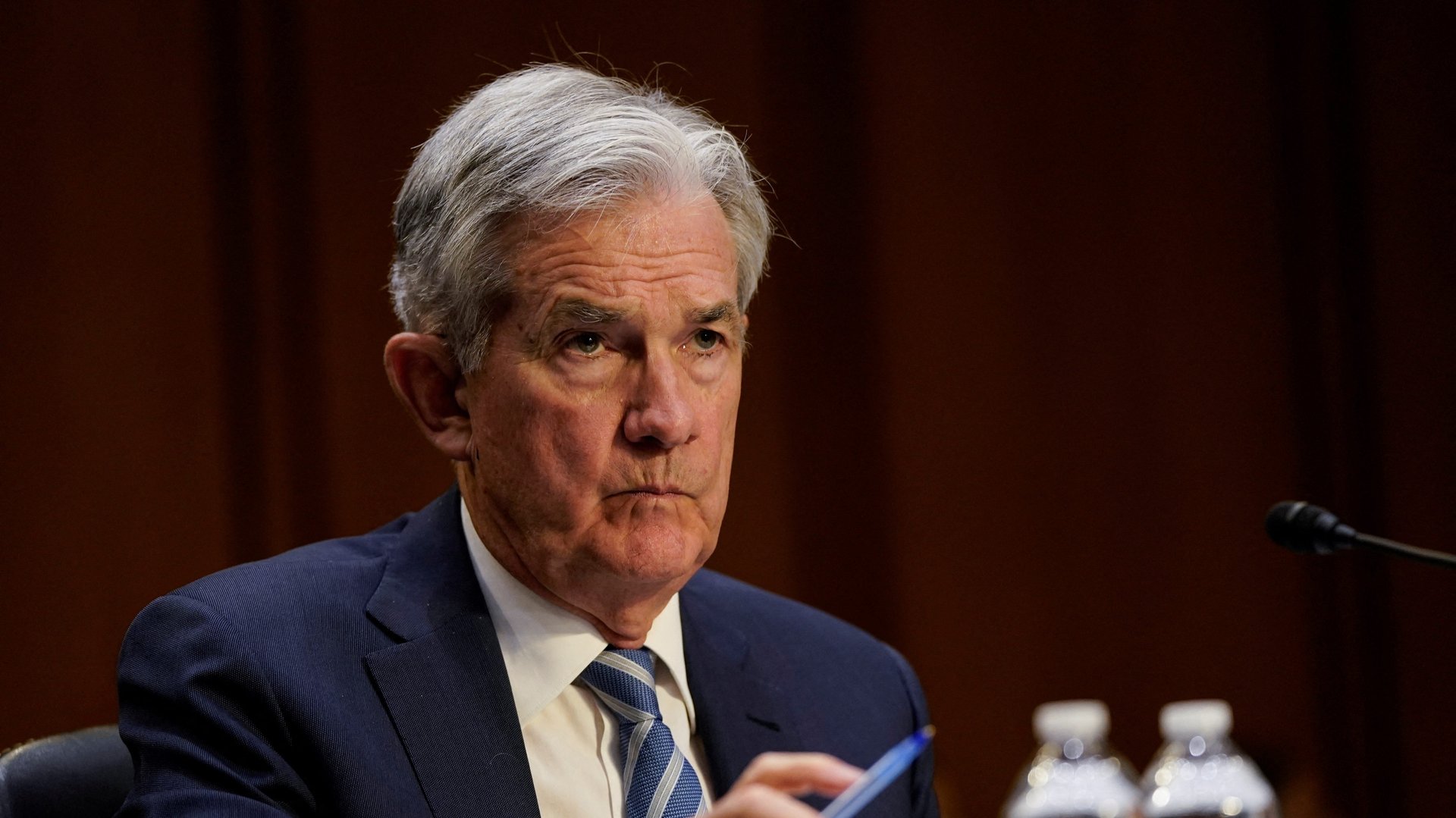The Fed knows its actions could trigger a recession
As the US Federal Reserve fights to curb inflation with higher interest rates, it’s aware that making borrowing more expensive right now could tip the US into a recession.


As the US Federal Reserve fights to curb inflation with higher interest rates, it’s aware that making borrowing more expensive right now could tip the US into a recession.
“It’s certainly a possibility,” said Fed chair Jerome Powell in his testimony today before the Senate Banking Committee. “It’s not our intended outcome at all. … Frankly, the events of the last few months around the world have made it more difficult for us to achieve what we want, which is 2% inflation and still a strong labor market.”
Higher interest rates lower the prices of assets broadly by making it more difficult for consumers to borrow to pay for durable goods like cars and houses. Already the Fed is seeing signs that its policies are cooling off the US housing market.
“Many indicators suggest that fewer people are visiting homes, the wait time for selling a home is increasing, housing sales are moving down, housing starts are moving down, and overall it’s a slowing in the housing market,” Powell said. “Some people will be priced out of the mortgage market, but that is ultimately what needs to happen.”
But rate hikes have no direct effect on energy prices, as Powell noted—and it’s energy prices that are increasing the cost of most everything else in the economy.
Will higher interest affect energy prices?
The most recent consumer price index was pushed up in part because the European Union was discussing turning off two-thirds of its oil consumption from Russia for most of May given the ongoing war in Ukraine. It decided to implement the policy at the end of that month.
Powell said the Fed believes it nonetheless can bring down prices in the US by lowering demand broadly, because the composition of inflation is different in the US compared to other rich nations seeing similar rates of inflation.
“Our inflation has more of a demand driven component, whereas in Europe, it is more to a greater extent driven by very high energy prices, although the United Kingdom has a mix of both of those,” Powell said. “We also have high energy prices here. So the levels are similar but the composition is a little bit different here in the United States.”